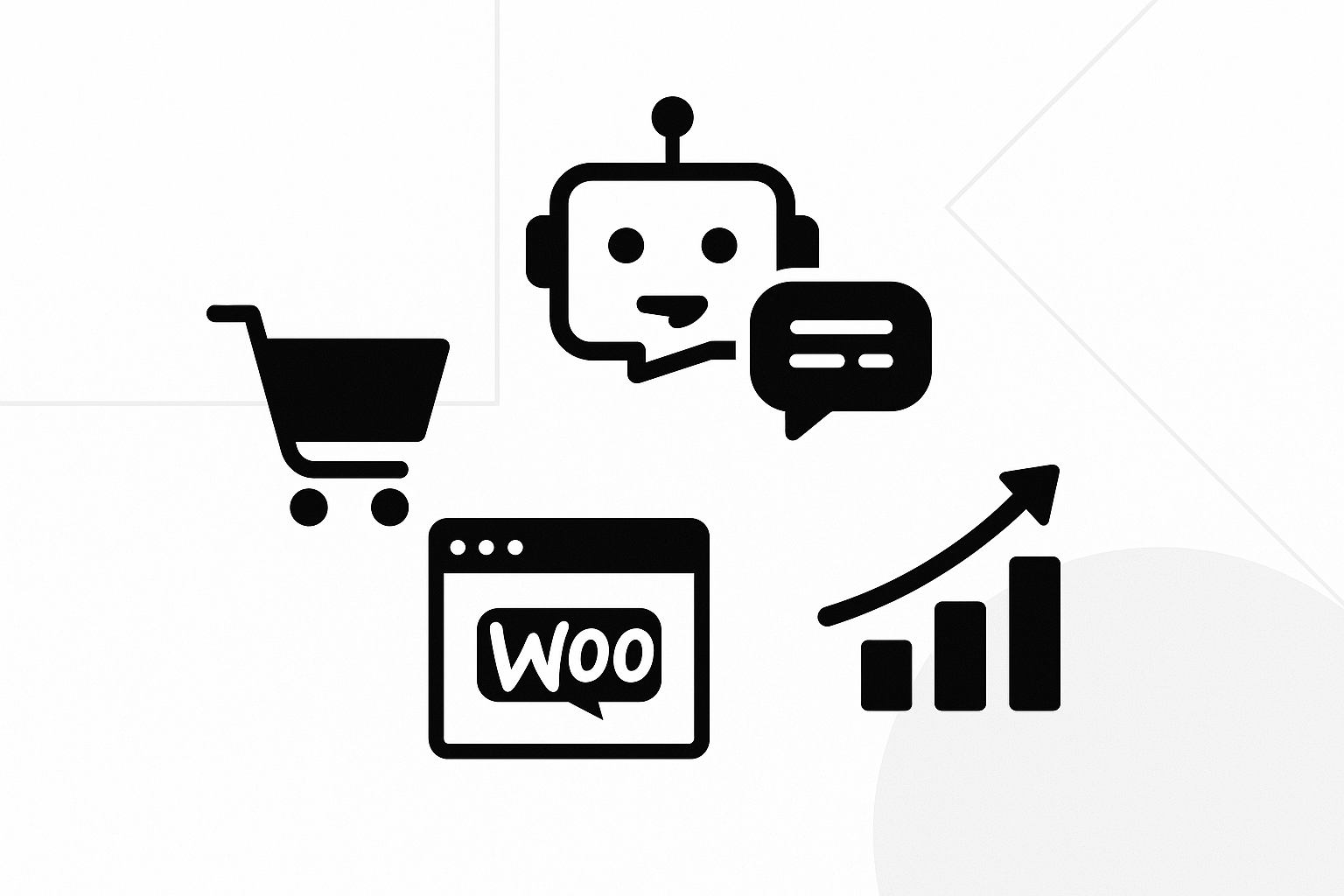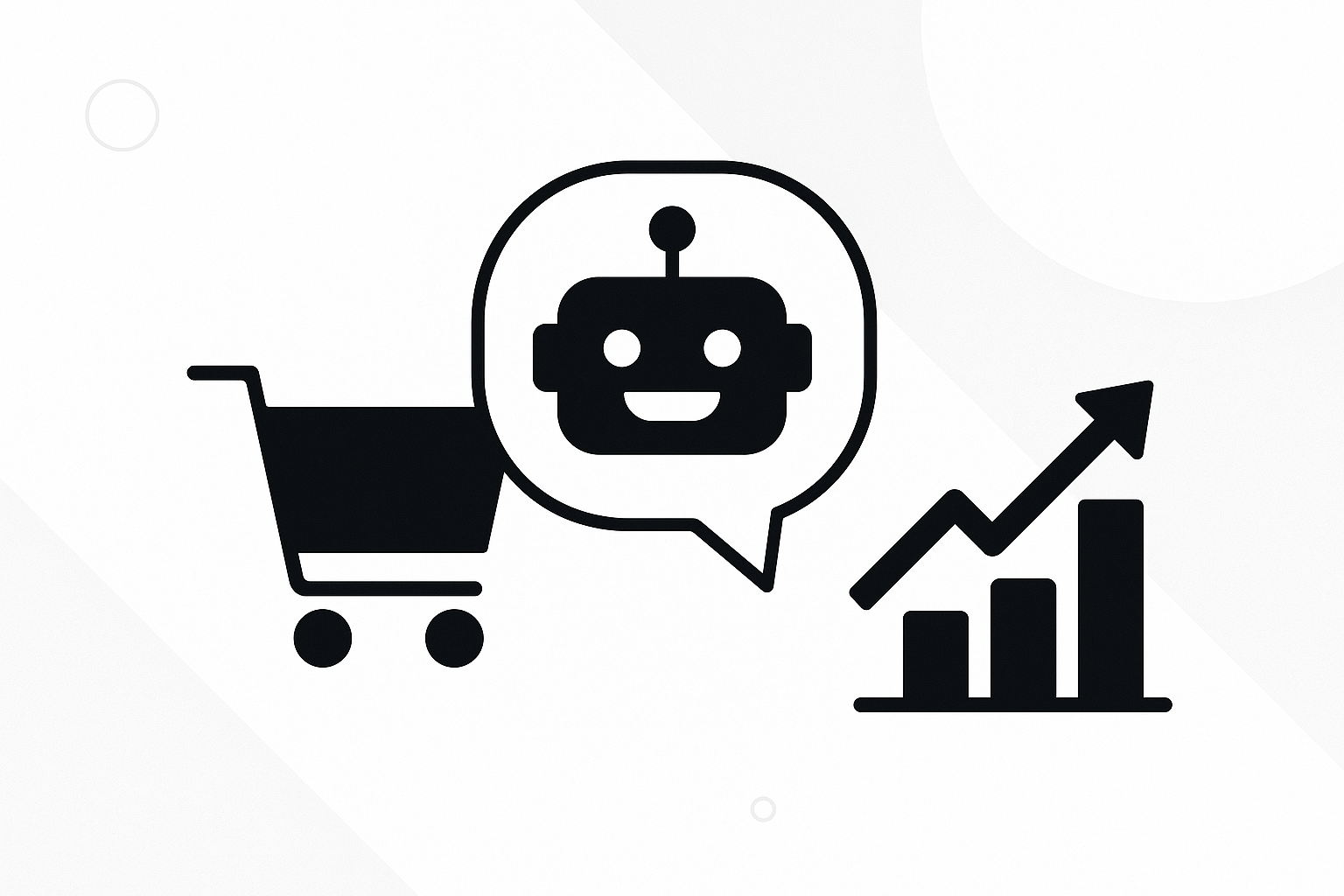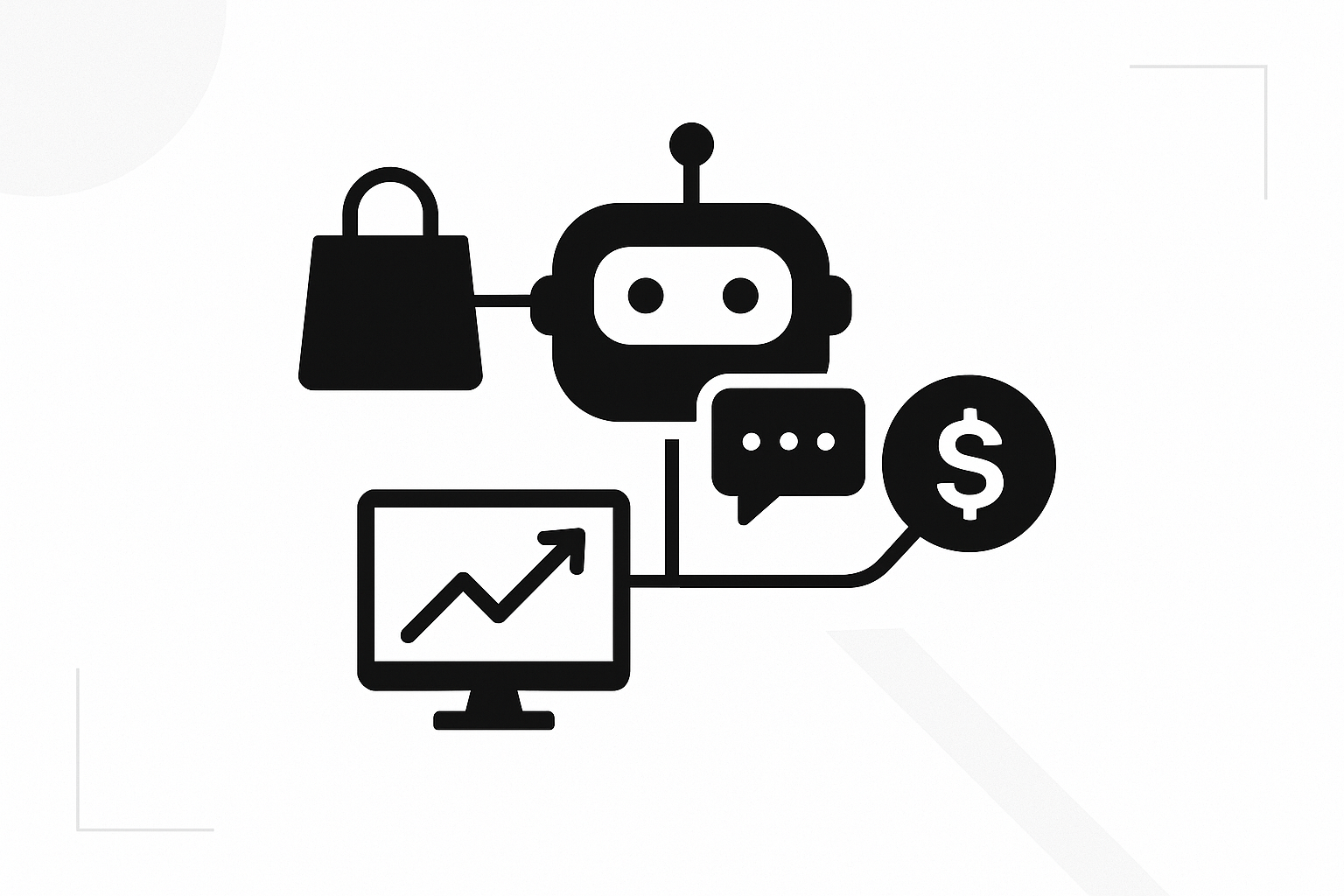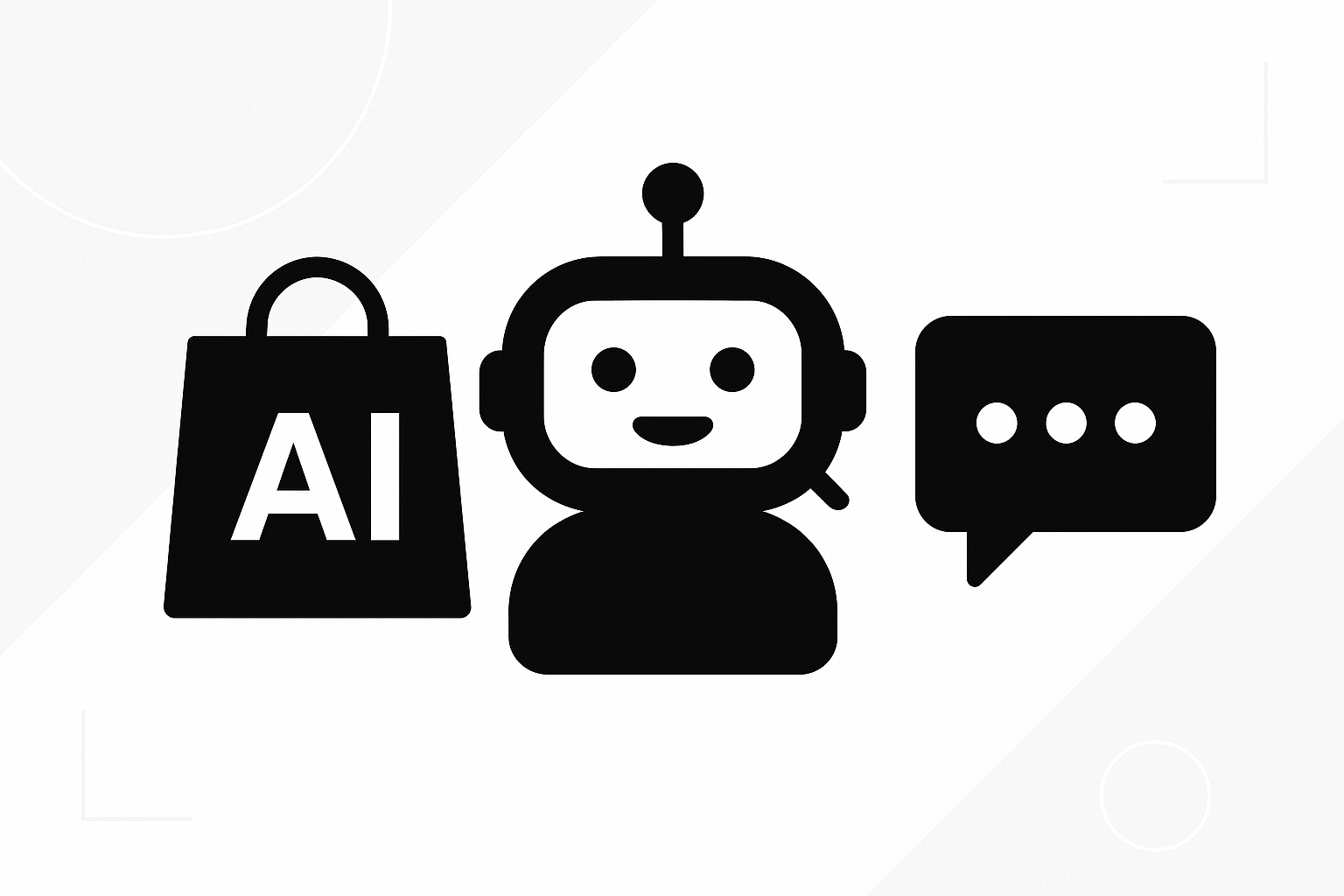Fix Cart Abandonment Fast: The WooCommerce AI Chatbot Plugin That Turns Product Questions into Paid Orders
Introduction: Stop Losing Ready‑to‑Buy Shoppers and Start Converting with a WooCommerce AI Chatbot Plugin
Your traffic is expensive, your products are solid, but too many carts still get abandoned. The gap is rarely your checkout. It is the moments just before a decision—when a buyer has a question about fit, shipping, compatibility, returns, or promo codes—and no one answers fast enough. A modern WooCommerce AI chatbot plugin closes that gap.
In this pillar guide, you will learn how an AI sales assistant for WooCommerce can recover abandoned carts in WooCommerce, increase WooCommerce conversion rate, and boost AOV WooCommerce with targeted, conversational playbooks. You will get actionable frameworks, proven flows, and KPIs to track in your analytics—so you turn product questions into paid orders.
If you want a practical, revenue-first way to fix cart abandonment fast, you are in the right place.
The Core Problem: Cart Abandonment Is a Symptom of Unanswered Buying Questions
Industry averages put cart abandonment around 60–80%. The top reasons are not mysterious: unexpected costs, lack of trust, unclear returns, shipping uncertainty, and product fit confusion. These are all questions your shoppers try to answer during their session. If you do not resolve them in seconds, they bounce.
Email flows and retargeting help, but they kick in after the exit. The biggest missed opportunity is right now—at the moment of hesitation. If your store cannot answer instantly, recommend exactly the right SKU, and apply the right incentive in real time, you pay twice: lost revenue today and higher acquisition costs tomorrow.
On mobile, the problem compounds. Small screens, slower typing, and context switching make self-service harder. That is why conversational commerce works: the interface is a chat bubble and the job-to-be-done is a quick answer that removes friction and moves a buyer forward.
What Inaction Costs: Margin Drain, Support Overload, and Slower Growth
Doing nothing means absorbing three quiet drains on profit. First, you lose high-intent sessions that were one nudge away from checkout. Second, your support team gets repetitive pre-sale tickets that an AI could handle instantly. Third, you forfeit qualified cross-sells and order bumps that would have raised average order value (AOV) without extra ad spend.
The result is a weaker return on ad spend (ROAS), a bloated ticket queue, and slower cash conversion. Worse, you train shoppers to wait for an email coupon instead of buying now, undermining your pricing power.
Meet Your On‑Site Closer: The AI Sales Assistant for WooCommerce
A modern AI sales assistant for WooCommerce is more than a help widget. It is a revenue playbook that answers pre-sale questions, recommends SKUs, negotiates objections, and rescues carts automatically. It uses your product data, policies, reviews, and order history to talk like your store and sell like your best rep, 24/7.
Key capabilities include contextual product recommendations, dynamic shipping and return answers, eligibility checks for discounts, cart-aware messaging, exit-intent triggers, and post-purchase upsell logic to boost AOV WooCommerce. When done right, it integrates seamlessly with your catalog and checkout so conversations become orders, not tickets.
How a WooCommerce AI Chatbot Plugin Helps Recover Abandoned Carts in WooCommerce
Here is what separates a conversion-ready chatbot from simple live chat. It identifies high-intent behaviors (added to cart, scrolled reviews, FAQ dwell time), triggers the right playbook, and offers a clear path to purchase. It escalates to a human when needed, but it never lets a buyer wait.
- Pre-purchase: Answer sizing, compatibility, and stock questions with data from your product catalog.
- Cart rescue: Detect exit intent or inactivity and offer reassurance, shipping ETAs, or a time-limited incentive.
- Checkout nudges: Auto-fill coupon fields, clarify payment options, and surface buy-now-pay-later answers.
- Post-purchase: Confirm order details, cross-sell complementary items, and schedule replenishment reminders.
Get Started in Under 60 Minutes: A Practical Setup Checklist
You do not need months or a data science team. Follow this step-by-step plan to go live fast and start recovering revenue the same week.
1) Install the right engine
Choose a WooCommerce AI chatbot plugin built for sales, not just support. For a ready-to-implement option, explore Velocity Chat, designed to connect to your catalog, cart, and checkout out of the box.
2) Connect your product and policy data
Sync your product catalog, collections, variations, tags, and attributes. Add your shipping, returns, warranty, sizing charts, and store policies. This is the knowledge base your AI uses to answer accurately in real time.
3) Define success metrics and guardrails
Set clear goals such as checkout conversion rate, cart recovery rate, revenue influenced, and AOV lift. Add brand voice rules, restricted topics, and escalation triggers. Decide when to deploy a coupon and the boundaries for discounting.
4) Build three high-impact playbooks first
- Fit and compatibility assistant: Map shopper inputs to product attributes and variants.
- Cart rescue: Trigger on exit intent or 45–90 seconds of idle time with reassurance and urgency.
- Post-purchase cross-sell: Offer complementary items or bundles to boost AOV WooCommerce.
5) Instrument tracking properly
Track events such as chat opened, question category, recommendation clicked, add-to-cart from chat, coupon applied, checkout started, order completed, and revenue influenced. Attribute outcomes to specific playbooks so you know what to scale.
6) Launch, then iterate weekly
Ship a lean version in days, not weeks. Review transcripts to spot friction. Add quick replies for the top five intents. Expand coverage to financing, backorders, or bulk discounts as you learn.
Playbook 1: The Fit and Compatibility Advisor That Increases WooCommerce Conversion Rate
Fit uncertainty kills conversions. Solve it with a guided conversation that ends in a confident recommendation and a one-click add to cart.
- Inputs to capture: body measurements, use case, device model, material preference, budget.
- Logic: match inputs to SKU attributes and filter out incompatibilities.
- Output: top 1–3 products with bite-size reasons and social proof. Include a 1-click add-to-cart button.
- Fallback: offer a size guide or quick human handoff if confidence is low.
Result: fewer returns and a measurable bump in conversion rate on high-intent product pages. This is one of the fastest ways to increase WooCommerce conversion rate without redesigning your PDPs.
Playbook 2: The Cart Rescue Flow That Recovers Abandoned Carts in WooCommerce
Cart rescue requires timing, empathy, and a clear incentive strategy. Your AI should detect exit intent, tab changes, and idle time to intervene gracefully.
- Step 1: Recognize friction. “Looks like you are comparing shipping options. Want a quick ETA for your location?”
- Step 2: Remove anxiety. “Returns are free for 30 days and we cover exchanges.”
- Step 3: Incentivize smartly. Offer a limited perk (free shipping threshold, small gift) before a discount code.
- Step 4: Provide a direct checkout link that preserves cart contents and any applied incentive.
Measure save rate by playbook, not just overall. The target is a 10–25% lift on otherwise lost carts, depending on price point and category.
Playbook 3: The Objection Handler That Closes High‑Intent Shoppers
Objections cluster around price, shipping speed, and product suitability. Train your bot to identify and answer with credibility and proof.
- Price: Offer bundles or value framing before discounting. If discounting, use small, targeted codes tied to margin-safe SKUs.
- Speed: Provide real delivery windows by destination and carrier SLAs.
- Suitability: Reference reviews that mention the shopper’s exact use case, not generic praise.
When your AI resolves one core objection, the willingness to proceed rises dramatically. This is where a sales-focused chatbot pays for itself.
Playbook 4: Post‑Purchase Upsells That Boost AOV WooCommerce Without Extra Ad Spend
You already earned the trust. Now use post-purchase windows to offer complementary items that ship together or digital add-ons that unlock instantly.
- Immediate order confirmation chat: “Want us to include the care kit with 10% off and no extra shipping?”
- Accessory suggestion based on variant: cables for devices, filters for appliances, covers for furniture.
- Replenishment scheduling: propose a subscription with flexible cadence.
These upsell flows can add 10–20% AOV lift when aligned to product fit and timing. Tie them to inventory and fulfillment rules to avoid delays.
Pro Tip: Pair Your AI Chatbot With a Guided Quiz for Even Higher Lift
Some shoppers prefer an interactive quiz before they chat. A quiz narrows choices, while the chatbot handles objections and checkout. Together, they compound conversions.
For a no-code quiz builder that feeds better intent data into your bot, try the Product Recommendation Quiz for WooCommerce. Use quiz outcomes to trigger chat playbooks with pre-filled answers, shortening time-to-purchase.
Trigger Strategy: When the AI Should Speak and When It Should Listen
The best experiences feel helpful, not pushy. Use behavioral triggers and quiet rules so your chatbot shows up like a seasoned salesperson who knows when to step in.
- Triggers: PDP dwell time > 45s, size chart opens twice, added-to-cart with no checkout in 90s, exit intent, coupon field focus, shipping FAQ views.
- Silence rules: during video playback, on blog pages, within 30s of previous message, or when a human agent is active.
- Priority: cart rescue messages override browsing nudges, but never stack more than one prompt per minute.
Messaging That Converts: Copy Guidelines for Your AI Sales Assistant
Good bot copy mirrors a trusted associate: concise, specific, and benefit-first. Use clear offers and avoid jargon.
- Lead with value: “I can check if this fits your model in 10 seconds.”
- Use numbers: “Ships by Tuesday to 94107 with standard delivery.”
- Name the risk reversal: “Free 30-day returns. No restocking fees.”
- Direct the action: “Add this size to your cart and I will apply free shipping.”
Keep responses under 3 sentences when possible. Offer quick replies that map to your top intents, like “Shipping time,” “Sizing help,” and “Discount eligibility.”
Data and Measurement: Proving ROI Beyond Gut Feel
You cannot manage what you do not measure. Track leading indicators and revenue outcomes tied to each playbook.
- Leading: chat engagement rate, time to first response, recommendation click-through rate, save rate on triggered flows.
- Lagging: checkout conversion rate lift, revenue influenced, recovered revenue, AOV lift, repeat purchase rate.
- Attribution: tag URLs, coupon codes, and cart events with playbook IDs. Split-test messaging and incentives.
Target a payback period under 30 days. If your chatbot does not reach breakeven on influenced revenue in the first month, iterate your triggers, scripts, or offer strategy.
Operational Excellence: Training, Governance, and Brand Voice
AI is powerful, but it still needs guardrails. Document your brand voice, discount rules, and escalation paths. Curate a clean knowledge base and retire conflicting policies.
- Training cadence: review transcripts weekly, add clarifications, update seasonal shipping cutoffs, and refresh top FAQs.
- Escalation: route premium orders, VIP customers, or warranty disputes to human agents instantly.
- Compliance: ensure GDPR-ready consent, data minimization, and PCI-safe flows for payments.
Consistency builds trust. The more precise your rules and data, the more your AI sounds like your brand and the better it sells.
Implementation Example: From 2.1% to 3.0% Conversion With Smarter Conversations
Consider a mid-market apparel store with 150 SKUs and a $68 average order value. Their baseline numbers: 2.1% conversion, 74% cart abandonment, $310k monthly revenue.
After deploying a sales-focused chatbot, they implemented three playbooks: fit advisor, cart rescue, and post-purchase upsell. Within 45 days, add-to-cart clicks from chat accounted for 12% of orders, cart saves improved by 18%, and AOV lifted to $74 via accessory bundles.
The net effect: conversion rose to 3.0% and monthly revenue increased to ~$380k, without increasing ad spend. ROI came primarily from recovered revenue and AOV lift.
Tech Stack Fit: Integrations That Matter
Your chatbot should plug into your WooCommerce catalog, coupon system, and analytics. It should also play nicely with reviews, email/SMS, and helpdesk tooling.
- Catalog: real-time sync of stock, variants, and pricing.
- Promotions: dynamic coupons with guardrails around margin and eligibility.
- Analytics: event-level tracking to GA4 and your BI tool.
- Support: seamless handoff to your helpdesk with full context.
If you use subscription or bundle plugins, ensure the bot understands those product types. The more context it has, the better its recommendations.
Security and Privacy: Trust Is a Conversion Lever
Shoppers buy when they feel safe. Make your privacy posture visible inside the chat. Avoid collecting sensitive data and never display full payment details inside the conversation.
- Consent: get clear opt-in for proactive outreach if you collect email or SMS.
- Storage: retain chat transcripts securely and limit retention windows.
- Transparency: add a “Why we recommended this” explainer for trust-sensitive categories.
Trust is not just compliance—it is conversion. A transparent chatbot reduces anxiety and clears the path to purchase.
Why Velocityplugins: Built for Sales, Not Just Support
Most chat tools were built as ticket deflectors. Sales comes second. We take the opposite view: revenue first, support as a seamless fallback. That lens shapes everything from playbooks to attribution.
If you want a purpose-built solution, explore the Velocity Chat WooCommerce AI chatbot plugin. It connects to your catalog, understands cart context, and comes with proven templates for fit, objection handling, cart rescue, and post-purchase upsells. You can try it with a live demo before installing.
A/B Testing Roadmap: Continuous Improvement That Compounds
Small copy and incentive tweaks can produce outsized returns. Treat the chatbot like an always-on experiment engine.
- Test the first line: benefit-first vs. question-first openers.
- Test triggers: dwell time thresholds and exit-intent sensitivity.
- Test incentives: shipping threshold reminders vs. low-value discount codes.
- Test layouts: single best pick vs. top-three recommendations.
Run one test per playbook per week. Roll winners storewide. Document learnings so your team does not retest the same ideas every quarter.
Sales Math: How to Forecast Impact Before You Launch
Model a conservative scenario to set expectations and align stakeholders. Here is a simple approach.
- Traffic: 100,000 sessions/month.
- Chat engagement: 8% open rate = 8,000 sessions.
- Add-to-cart from chat: 20% = 1,600 carts.
- Checkout conversion of chat carts: 35% = 560 orders.
- Incremental orders vs. baseline: assume 50% net new = 280 orders.
- AOV: $70. Incremental revenue ≈ $19,600/month, plus AOV lift on existing orders.
Even if you hit half these numbers, the payback period is typically within one billing cycle. That is the value of talking to shoppers when it matters most.
Team Workflow: Who Owns What
Assign clear ownership so your chatbot keeps getting smarter. Treat it like a sales channel with a weekly operating rhythm.
- Marketing: write copy, design offers, and run tests.
- Merchandising: curate product recommendations and bundles.
- Support: review escalations and fill knowledge gaps.
- Analytics: report on influenced revenue and ROI.
When everyone contributes, the bot reflects your best sales instincts across the whole store.
Troubleshooting: If Results Stall, Fix These First
If conversions are flat, start with these quick diagnostics. They resolve most performance issues without rebuilding your bot.
- Trigger timing: intervene earlier on PDPs; wait longer on collection pages.
- Confidence rules: do not recommend more than three products or the wrong variants.
- Offer strategy: try value-add perks before discounting margin.
- Policy clarity: tighten shipping and returns answers with concrete timeframes.
- Attribution: ensure events and coupon tags attribute sales correctly to playbooks.
Benefits and Proof: Why AI‑Driven Conversations Win
Results matter. Here are the tangible advantages you can expect with a focused, sales-first chatbot.
- Recover revenue at the point of hesitation, not days later via email.
- Answer complex, product-specific questions instantly with accurate data.
- Lift conversion rate by removing friction unique to mobile and first-time visitors.
- Boost AOV with smart upsells timed to intent and inventory.
- Reduce support tickets by deflecting repetitive pre-sale questions.
- Create measurable ROI with event-level attribution and A/B testing.
We see outsized returns when merchants focus on three levers: fit confidence, shipping clarity, and targeted incentives. Nail those and your shoppers stop comparing and start checking out.
Conclusion: Put a WooCommerce AI Chatbot Plugin to Work and Turn Questions into Checkouts
Cart abandonment will not fix itself. Shoppers need fast, specific answers in the moment. A WooCommerce AI chatbot plugin acts as your on-site closer, helping you recover abandoned carts in WooCommerce, increase WooCommerce conversion rate, and boost AOV WooCommerce without increasing ad spend.
Ready to see it in action on your catalog and checkout? Start with the Velocity Chat WooCommerce AI chatbot plugin or jump into the demo to experience the cart rescue flows. If you also want to capture intent upstream, pair it with the Product Recommendation Quiz for WooCommerce and turn browsing into buying.
Frequently Asked Questions about Fix Cart Abandonment Fast: The WooCommerce AI Chatbot That Turns Product Questions into Paid Orders
How does a WooCommerce AI chatbot plugin recover abandoned carts in WooCommerce?
It watches for exit intent and idle carts, answers last-minute questions, and offers targeted incentives. The bot can apply a coupon, provide shipping ETAs, and create a direct checkout link that preserves cart contents. By resolving friction in real time, it saves otherwise lost orders. Post-exit, it can follow up via email or SMS if the shopper opted in.
Will an AI sales assistant for WooCommerce replace my support team?
No. It handles repetitive pre-sale questions and simple post-purchase tasks, reducing ticket volume. Complex issues and VIP customers still route to humans. Think of it as a sales-first front line that frees your support team to focus on higher-value conversations and escalations.
How do I measure if it increases WooCommerce conversion rate and boosts AOV WooCommerce?
Track engagement rate, add-to-cart from chat, cart save rate, checkout conversion lift, and revenue influenced. Tag coupons and events with playbook IDs. For AOV, measure upsell acceptance rate and average order value on orders influenced by the bot versus baseline.
How long does setup take and what data do I need?
Most stores launch in under an hour. You need a synced product catalog, shipping and returns policies, and basic rules for discounts and brand voice. Start with three playbooks—fit advisor, cart rescue, and post-purchase upsell—then iterate weekly using transcripts and analytics.



